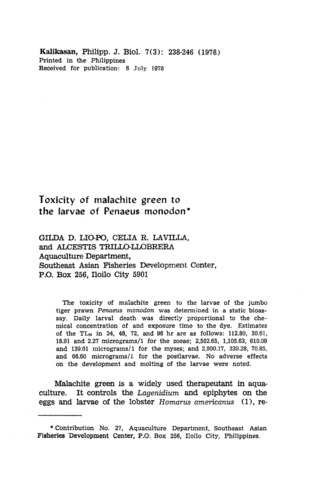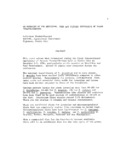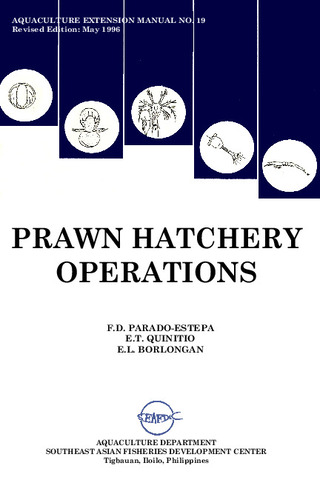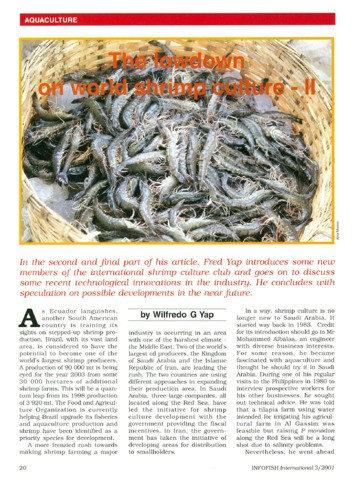Toxicity of malachite green to the larvae of Penaeus monodon
Share
Abstract
The toxicity of malachite green to the larvae of the jumbo tiger prawn Penaeus monodon was determined in a static bioassay. Daily larval death was directly proportional to the chemical concentration of and exposure time to the dye. Estimates of the TL50 in 24, 48, 72, and 96 h are as follows: 112.80, 30.61, 18.91 and 2.27 micrograms/l for the zoeae; 2502.65, 1105.63, 610.09 and 139.01 micrograms/l for the myses; and 2900.17, 339.28, 70.85, and 66.60 micrograms/l for the postlarvae. No adverse effects on the development and moulting of larvae were noted.
Description
Contribution No. 27, Aquaculture Department, SEAFDEC.
Suggested Citation
Lio-po, G. D., Lavilla, C. R., & Trillo-Llobrera, A. (1978). Toxicity of malachite green to the larvae of Penaeus monodon. Kalikasan: The Philippine Journal of Biology , 7(3), 238-246. http://hdl.handle.net/10862/1016
Subject
Taxonomic term
Collections
- AQD Journal Articles [1249]
Related items
Showing items related by title, author, creator and subject.
-
An overview of the nutrition, feed and feeding techniques of prawn penaeid/shrimps
Piedad-Pascual, Felicitas (Philippine Council for Aquatic and Marine Research and Development, 1989)This paper echoes what transpired during the first International Conference of Penaeid Prawns/Shrimps held in Iloilo City in December 4-7, 1984, particularly on the Nutrition nd Feed Development. Around 25 papers were ... -
Prawn hatchery operations
Parado-Estepa, Fe D.; Quinitio, Emilia T.; Borlongan, Emeterio L. (Aquaculture Department, Southeast Asian Fisheries Development Center, 1996-05)The manual, an updated version of the 1984 SEAFDEC/AQD manual, presents the underlying principles and step-by-step instructions of prawn larval and post-larval rearing. The techniques described are not only applicable to ... -
The lowdown on world shrimp culture - II
Yap, Wilfredo G. (INFOFISH, 2001)This paper introduces some new members of the international shrimp culture club and goes on to discuss some recent technological innovations in the industry, particularly the polyculture of tilapia (mainly Oreochromis ...






